You've Got to Look into the Light:
An Interview with Jesse McLean
By Brett Kashmere
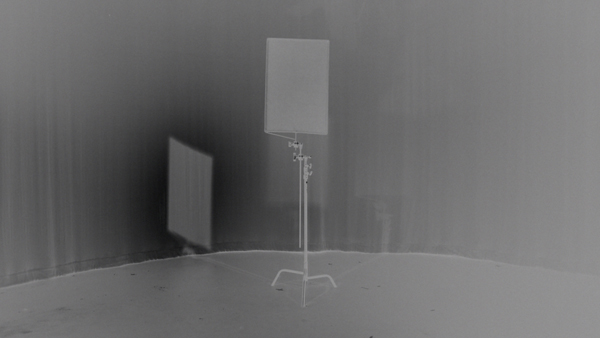 I'm in Pittsburgh and It's Raining / Jesse McLean
I'm in Pittsburgh and It's Raining / Jesse McLean
Over the past half-decade, Jesse McLean has emerged as one of America’s most exciting and perceptive media artists, a poet of the contemporary pop culture experience. Her body of work – comprising over a dozen videos and media-based installations since 2008 – is remarkable in its consistency of quality and solid craftsmanship, while continuously evolving new forms. An audiovisual collagist at heart, McLean’s early work draws heavily from the world of melodramatic nonfiction TV and the easily forgotten VHS miscellanea of past decades, frequently complicated with enigmatic text fragments. With the 2010 crowdpleaser Magic for Beginners, she began to mine the bottomless, user generated well of Web 2.0, as well as personal histories, demonstrating a sharp eye for the plainly poignant and the sadly absurd. Whereas her early videos are raw and at times sentimental, her more recent projects present a new level of formal and tonal sophistication, melancholy, and ambiguity. McLean’s gift for selection and recombination has lately been supplemented by her own original footage and stepped up production technique, such as in the beautifully photographed, many-threaded portrait, I’m in Pittsburgh and It’s Raining (2015). This deliberate (and skillful) blurring of the found and the made distinguishes her intricate cross-genre amalgams from the abundance of hyper ironic mash-ups, earnest, formulaic essays, and spartan long-take observationals that permeate today’s experimental film and video universe.
Formerly an Assistant Professor of Cinematic Arts at the University of Iowa, McLean has lived in Iowa City since 2012 with her husband, artist Thad Kellstadt, who often collaborates on the soundtracks for her videos. Easygoing and unpretentious, the likeable Midwestern duo recently resettled in Milwaukee, as McLean begins a new teaching post at the University of Wisconsin-Milwaukee. I first broached the idea for this interview while visiting Iowa City in March 2014, for a talk and a screening that McLean programmed as part of Headroom, an exhibition series she initiated there. The interview unfolded over a six-month period via emails, which have been expanded upon and edited, and appears in INCITE #6: Forever (Fall 2015). Many of the works discussed are distributed through Video Data Bank.
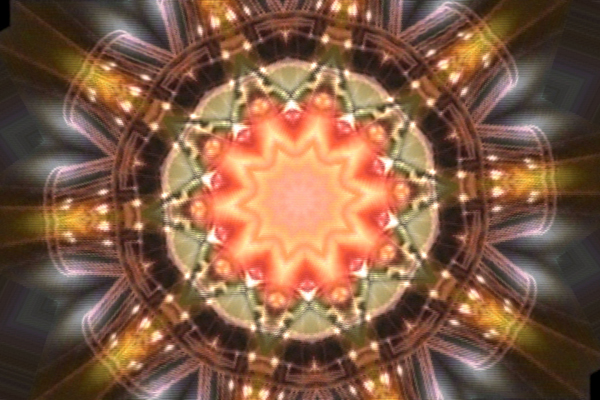 The Eternal Quarter Inch / Jesse McLean
The Eternal Quarter Inch / Jesse McLean
Kashmere: You grew up in Pittsburgh. What was that like? Did the city’s character, culture, geography, etc., have any bearing on the path that you chose in becoming an artist, or the direction your work took early on?
McLean: I have to answer this in two parts, because I actually moved to Pittsburgh when I was 13. I was born in Philadelphia and lived there prior to moving to Pittsburgh.
In Philly, my mother went back to school to finish her undergraduate degree at Penn when I was in elementary school. She studied filmmaking with Amos Vogel! She made a number of films on Super 8, and worked at home so the gear was around. Plus my brother, father and I starred in a number of her films so there was a definite presence of film production and it seemed fun. My mother decided later to return to painting instead of film, but there was always art around, always a studio filled with cool objects and tools. I was fortunate to have been not only exposed to a creative life but also to have had my own creativity encouraged. My mother‘s studio was in a huge downtown building, and I loved going there, walking around, peering into the other artists’ studios.
In Pittsburgh, I took a class at Pittsburgh Filmmakers (where I would later be employed) while in high school. This was a wonderful experience and pushed me towards becoming a filmmaker. I had all my mother’s old Super 8 gear to use and was immediately absorbed by the editing process. I’m not sure how much the city influenced me until later, when I returned to Pittsburgh in my early-20s after college. Then I realized how fortunate I was that Pittsburgh was my home! I was learning about experimental cinema, being exposed to a ton of mind-blowing work through Jefferson Presents… (a microcinema) and learning about how important Pittsburgh, Sally Dixon, and Pittsburgh Filmmakers had been in the development and support of many avant-garde filmmakers. I think Pittsburgh is a great place to experiment. It doesn't have the same pressure as larger cities with more commercial art scenes and it's much cheaper to live there. There might be less exhibition opportunities in the long term, but the art scene is solid and supportive. Plus, it’s beautiful. I really miss Pittsburgh, which I consider my hometown (sorry Philly).
Kashmere: What was your experience at Oberlin College like? Did you study art? What were you into?
McLean: I had a great experience at Oberlin, made wonderful friends, and learned a lot. I think being there had a radical effect on my way of thinking and approaching the world, especially creative work. I gained the confidence to doubt infrastructures and established systems and ask a lot of questions. I studied studio art and cinema studies and was really into animation and comics at the time. I regret not taking more art history courses and I would have liked to get introduced to experimental cinema and video art sooner, which happened after college. I also would have liked to realize earlier that a creative practice shouldn't be limited to just the artist alone in his/her studio, but that curation, criticism, history, and outside influences also are an integral part of any creative practice. My teachers at Oberlin are not to blame for this oversight, rather I functioned under pretty old, romantic, and outdated notions of the artist alone in the white cube, funneling creativity and free from influence. It cracks me up now. I will say that I worked very hard back then, even if I was misguided.
Kashmere: What did you do after graduating from Oberlin?
McLean: After Oberlin I moved to Brooklyn. I’d spent a year in New York City prior, taking filmmaking classes at NYU and working for a production company that specialized in advertising for children (I worked on a Wendy’s Kids Meal ad – pretty awesome/gross to make a giant Frosty out of shaving cream). I worked in the film equipment repair shop at NYU, too. That was the beginning of my love affair with working in “cages” or equipment rooms at universities (three total). But right after Oberlin I moved back to NYC and worked as a movie usher for Film Forum. Lou Reed and Laurie Anderson came in once, that was a highlight. It was a sweet job, and provided free access to any of the independent theatres in town, but low paying and super boring. Anyway, it was only for a few months before I entered the film industry. I was a PA, and then I specialized and went into the lighting department. In particular, I was a grip. Grips cut and shape light, as opposed to electrics who focus the lights and handle power distribution – a subtle but important difference. Grips also handle the dolly and build camera rigs and other stuff as needed. I did this job for approximately four years. Have you seen The Mothman Prophecies (2002)? I’m doing the “special” on Richard Gere (waving a flag in front of a light to create a strobe-like effect that indicates the Mothman is coming). This is reenacted beautifully by Josh Yates in I’m in Pittsburgh and It’s Raining.
Kashmere: After leaving New York you eventually landed in Chicago. Can you talk about your time there, and the role the city and it’s famously supportive experimental film and video community played in your creative development?
McLean: I moved to Chicago to go to graduate school at the University of Illinois at Chicago. I had a friend, Eric Fleischauer (a great artist) who was there and he loved it. Plus Deborah Stratman was on faculty. I had seen her film In Order Not To Be Here (2002) as part of the traveling Ann Arbor Film Festival Program when it stopped in Pittsburgh and was really bowled over by that piece. Deborah was my adviser at UIC and she remains a big influence. I also worked with Jennifer Montgomery my first year, and she challenged me in an incredibly productive way. When I was at UIC the Moving Image faculty was Deborah, Jennifer Reeder, Jennifer M., and Ben Russell. Amazing! A real dream team – they are all such different artists and produce complex, fantastic work constantly. I was fortunate to be there with those four artists, not to mention the other awesome faculty at UIC. I really treasure my graduate experience; it changed my art practice significantly. My work was far more eclectic before UIC. Learning to edit ideas and recognize myself as an “over-builder” were hugely important steps in my artistic development.
After school, even during school, I got to know Chicago’s art community a bit (it’s huge), and the film/video community a lot (not so huge). It’s a supportive scene, but also critically engaged. This is a rare combination. Also, it’s a diverse creative scene, in that there are so many different films/videos/projects happening. Video art, filmmakers, documentarians, experimental narratives, performers, radical television, materialist 16mm, Glitch, writers, curators, programmers: everyone supports each other and just wants the work to be stellar. When I think of all the terrific experimental filmmakers that are coming out of and have come out of Chicago or have a strong connection to it, it’s a long and impressive list. There are so many good screenings all the time, too. I was exposed to so much great work. I miss that. But I’m really happy with how close Milwaukee is to Chicago, because I still feel connected to that community, a connection I never felt before or since.
 Somewhere only we know / Jesse McLean
Somewhere only we know / Jesse McLean
Kashmere: What was the impetus for Somewhere only we know (2009)? It feels as though a lot of the themes of your work – connection/disconnection, loneliness or isolation, the alienating effects of technology, the emptiness of pop culture, performed vulnerability, impending disaster or embarrassment, anticipation, television’s heightening of emotion, mediated experience – are crystallized in that piece.
McLean: I was (still am?) concerned with the long-lasting effects of reality television, specifically its use of suspense. I just wondered if there could be some psychological damage from being emotionally lifted and dropped so regularly. When I happened upon the other material, of this earthquake interrupting reality shows (Judge Judy and Big Brother) it was too good to be true! A portrayal of reality being interrupted by reality. The loss of control evidenced how deceptive sound and picture can be, that this television world is fictional and not separate, it's being built in front of your eyes and ears. That’s of regular interest to me: pointing at that line of difference between the front and back of the screen and how flimsy it can become. There’s a lot that goes on in the structure of television, especially reality television that is incredulous to me – like how can they get away with this? Yet I can’t turn away completely. I suppose I feel that way about advertising, too and most of pop culture. Because there are so many people watching, listening, etc. I hate to think of us as being without any agency and that we are only being lulled into subservient behavior and consumerist habits. That is probably happening but I hope that there might be some other motivation in watching this stuff, too. Desire and longing for connection play a role. I never approach subjects with an interest in ridiculing them. Though irony is undoubtedly in the work it’s more directed at the construction. There’s a longing for my own connection, for some understanding of the characters or people that signed up to take part in this show or whatever. I’ve always been kind of overly sympathetic, which is not always good in real life, but helps out in art making, especially when you’ve got subjects that are easy targets.
Kashmere: You still watch reality TV?
McLean: No, it’s too stressful. The attraction is still there, like a bag of Cool Ranch Doritos. I’ll watch cooking shows and home and garden shows but I can’t commit to characters and weekly updates/drama. I’m much more into fantasy these days. I’d rather watch something that bears no semblance to my life.
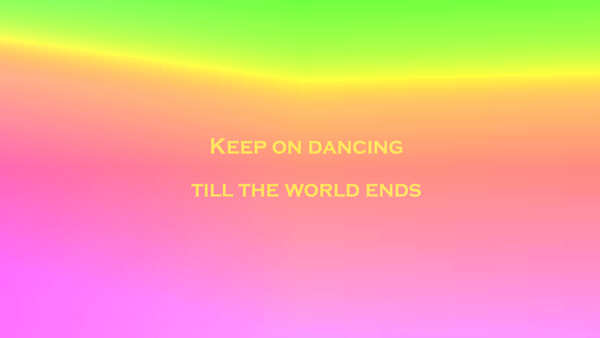 Lose Yourself / Jesse McLean
Lose Yourself / Jesse McLean
Kashmere: A desire for transcendence, for losing or escaping one’s self, is an idea that floats through your work in different ways, with both positive and negative implications. Sometimes it’s treated with cynicism or suspicion, such as in The Eternal Quarter Inch (2008) and Lose Yourself (2011), but there are moments of sincerity and shared emotional connection as well (often with the aid of pop music), most notably in Magic for Beginners (2010), which is probably your most optimistic piece. I’m curious how you see your own work functioning with respect to the spiritual void that seems to permeate our digital / virtual / online culture.
McLean: I wouldn’t go so far as to call it a spiritual void, probably because I have issues with defining spirituality. I was raised with no religion, and am used to having connective spiritual experiences with people that are remotely located through media, music, and books (and time). So rather than call it a void, I would say that online experience can function as a decadent curiosity sinkhole but also as a way for relationships to take new and surprising shapes. There are more outlets for fantasy. I wouldn’t advocate throwing away all the technology and invention, but I won’t blindly celebrate it, either. So my position is one of critical appraisal: I’m interested in using this technology but I’m looking at it with a critical eye, and hopefully my work conveys that dual interest and skepticism.
Kashmere: The prevalence of appropriated text in your videos and the wide-ranging sources it derives from suggest you’re a dedicated reader. Is this the case? What do you read? And what is your process for filtering the text that you employ in your work?
McLean: I’m a dedicated reader but my selections are highly varied. I teach so I am often reading film theory and new media texts and interviews with artists because I’m assigning these readings in my classes. But I get tremendous pleasure from reading fiction and short essays and articles. In my videos, I like to use text for a variety of reasons, the most obvious being as a way to introduce content and/or ideas directly into the work. But I also like the combination of picture and text, the way one can disrupt the other and change the meaning. Often I use text to function as a narrator that is not seen or heard by the viewer. The sources that I cull for material range from hi-brow scholarship to cheesy pop lyrics and transcriptions of television dialogue. I enjoy collaging text as much as image and sound. I’ve been writing my own text lately, because I’ve had a clear sense of what I wanted to say and what kind of voice I wanted to establish via text. I have no doubt there will be a continuation of appropriated text in my work though, as I’m often inspired by something text-based at the start of a project, probably more so than an image or a sound.
Kashmere: You mentioned teaching. You’ve been on the Cinematic Arts faculty at the University of Iowa for the past several years, and will be starting a new position at the University of Wisconsin-Milwaukee this fall. Does teaching play a role in your artistic practice, and vice versa?
McLean: I believe so. Part of what I love about teaching is getting to be in a creative environment. It’s inspiring. It’s a lot of work, but my creative energy is increased, not dampened. My students and colleagues expose me to a lot of material and I’ve learned a lot from them, I always do. At the University of Iowa I taught many courses that were heavy on tech (Sound Design, Image Design, Editing) and that might partially explain why my work got a bit more polished these past couple of years. Teaching continuity editing practices doesn’t make me want to utilize narrative conventions but it does make me evaluate my own editing practice and consider my patterns and how to work with and around them. Teaching also keeps me sharp: I have to pay attention to the world, to other artists, curators, writers, etc. I can’t disappear completely into that curiosity sinkhole I mentioned earlier.
Kashmere: In addition to appropriated text, “found” videos play a major role – a variety of roles, really – in your work. Are you a footage collector by nature, or do you only seek out specific materials for specific projects?
McLean: It’s usually the latter, seeking out footage to support the ideas. I do collect material if I happen to find something that might be useful but I’m not combing the thrift stores or YouTube for treasures. Some footage presents itself, like the earthquake footage in Somewhere only we know – that was serendipity. I do end up with a lot of material because when I am collecting stuff for a project I tend to amass way more material than I need, so I put it aside for another project and it becomes part of the collection. I have used stuff years later, and some is still waiting for the right project. Right now I’m about to dig out some older material to see how it might play a role in a new video. But I’ve also been collecting new YouTube videos…
 The Invisible World / Jesse McLean
The Invisible World / Jesse McLean
Kashmere: Intriguing! I’d like to see a log of your YouTube search history someday, as you seem to have a knack for recognizing compelling Internet video phenomena. One of my favorite parts of The Invisible World (2012) is the use of unboxing and haul videos. But despite the variety of image sources, including found videos of uncertain or anonymous authorship, disembodied voices, and narrative registers, The Invisible World feels like a very intimate and personal video. There is a strong impression of loss, underlined by the following phrase that appears onscreen about midway through: “The phenomenon of collecting loses its meaning as it loses its personal owner.” On one level there is a clear critique of consumer culture going on in the video, but there is also a sense of the object beyond commodity, as something that carries with it an emotional meaning or aura. When an object (or collection) is divorced from its owner, does that meaning dissipate? And what do the things that we own say about who we are?
McLean: It’s mysterious why a certain object can be so valuable or meaningful to a certain owner and not another. This situation presents itself when you inherit items, as I did prior to making this film. The items I received were meaningful to the owner, but less so to me, or meaningful in a different way because I knew they were valuable to the previous owner, which made them hard to part with. For me the objects became a path to the owner, who was a relative of mine who I loved. I do think that when the owner is gone, the object becomes an object once again and the meaning is up for grabs. The objects are not able to love us back. It’s not a reciprocal relationship but that doesn't mean the relationship doesn’t have emotional weight or value. The objects reflect our desires and sometimes become markers of identity. I doubt the actual items can communicate these complex desires to other people on their own. That goes back to the Benjamin quote, about the “collecting phenomenon losing its meaning as it loses its personal owner.” But I’ve always loved looking at other people’s stuff and looking at stuff in general. It’s filled with potential.
Kashmere: How did Remote (2011) come about? Your work seemed to take a new, more narrative direction with that piece. There’s also a pronounced blurring between found and self-shot images, which carries forward through your latest videos.
McLean: I had just finished Magic for Beginners, which is highly expository, and I needed a change, something with less dialogue and no text. I also wanted to use material that was less obviously drawn from a highly emotive pop culture sphere. Initially I thought I could compile nothing but suspenseful moments from horror films and the audience would get so used to the build up they would get bored. Somewhere along the way I began investigating the use of suspense and pacing, and started building a loose narrative of sorts. I got interested in the mechanics and why it worked even though it was repetitive and familiar. People had had trouble distinguishing the footage I shot from the material I appropriated in Magic for Beginners and I found that reaction intriguing – it pointed to this potential for a world of cinematic material that was familiar but not easily placed. I wanted to push that idea further; I still do. I'm constantly amazed by how deceptive cinema can be.
Kashmere: Your newest piece, I’m in Pittsburgh and It’s Raining – like so many of your videos – is deceptively layered and elusive. What starts out as a documentary portrait of a body double / stand-in for a Hollywood actress (Anne Hathaway) becomes increasingly complicated and formally experimental; narrative and nonfiction begin to blur as you bring more and more elements into the mix. Questions arise. Who and where is the author of the piece? Is the narrator – who we never see, until near the end – reliable? Is her story a put-on? The video has a surprising number of turns and diversions, which feel almost like plot twists. Could you talk about your starting point for this video, and then how you built the work outward from there?
McLean: I work fairly quickly once I’m to a certain point with a project, but the idea(s) can generate over years. I like stories, especially personal narratives, so I pay attention when people share and I have a good memory for personal anecdotes. I still tend to ask a lot of questions. Amy Wellock Staggs, the subject of the film, works for the Pittsburgh Cultural Trust, for both Wood Street Galleries and Space gallery in Pittsburgh. My husband, Thad Kellstadt, was having a solo show at Space, and we went out to lunch with Amy and she was talking about her work as a stunt person and lighting stand-in. Because I’d worked in the film industry as a grip, a lot of what she described resonated with me. I’ve always maintained an interest in looking “behind the scenes,” partly because I used to be there (or still am?) but mostly because of my interest in seeing the people behind the smooth facade of cinematic and televisual experiences. Our lunch was in the summer of 2013 and I remembered her story and wanted to do something with it but wasn’t sure what. It partly inspired the highly fictionalized text narrator in another piece called Just Like Us, which I made in fall 2013, but I still wanted to do something with Amy herself.
I had never done a portrait film before, but I have used nonfiction techniques in previous works. I asked if she would be willing to have me interview her and collaborate on a project and fortunately she said yes. I interviewed her in July 2014, but prior to that I was developing ideas for picture. I knew the audio interview with her would be paramount, but I had to generate ideas for visuals. I went through the films she worked on, pulling out any images I thought could be her. Separately and about a year earlier, I had an idea to do a shoot with a staged set-up of some lighting equipment, because I still find the equipment itself beautiful. I had been wanting to do this but wasn’t sure to what purpose and then this project seemed the right home for those visual ideas. I also recall being in my hotel room when I was at the Oberhausen Film Festival in May 2014, researching lighting stand-ins and body doubles. That got me to riff on the idea of a mirror, how that process developed and the project just kept getting richer with potential. I found out the anecdote about “I'll Be Your Mirror” by the Velvet Underground, how Andy Warhol wanted the album to ship with a purposeful skip on that song so it would endlessly be stuck on that lyric. I loved that idea!
It was all very inspiring once it got going. It’s gratifying when an idea you’ve been holding onto for a long time, like the lighting equipment composition, finds a home finally. That’s part of the development process that I have to be mindful of, actually. Once an idea really gets cooking, everything feels like potential material. It’s what I like about my practice and art making, but sometimes it can get cloudy or too diffuse with ideas. But on this project I worked a bit differently in that I allowed myself to be more obvious with connections and metaphors. I ruled some material out so that I could be more direct and less complex. I anticipate a return to more essayistic methods or density of collage but this was an important step for me in my practice, to limit myself a bit and try out more direct connections. Or, in another way, to know when to let the idea breath on it’s own. After a project is completed, I like to pull out my sketchbook, to see if the end result is very similar to thoughts I might have had years prior and often it is. Then I feel like it’s not as intuitive a process as it seems. But it doesn’t feel that way; it feels more magical and surprising.
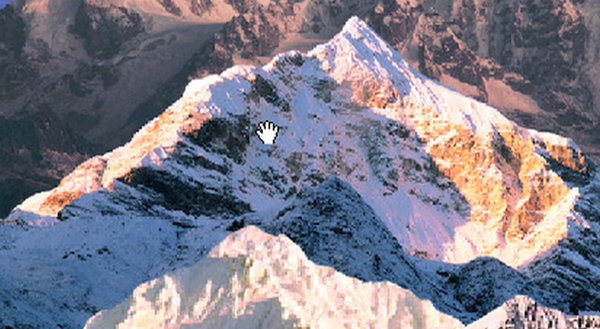 Climbing / Jesse McLean
Climbing / Jesse McLean
Kashmere: Speaking of magic: that seems to be an important preoccupation for you. Specifically I’m thinking of Magic for Beginners, with its references to psychic connections and its imagery of a magician shuffling cards,but there are intimations of magic sprinkled throughout your body of work: the hypnotic, spinning newspaper in your loop projection, Relations (2010), for instance; the unseen supernatural presence that runs through Remote; the animating hand of Climbing (2009), which is a visual “trick” of sorts. Magic is predicated on misdirection and subterfuge – sleight of hand – traits that your videos revel in. Where does that interest come from?
McLean: I’m equally interested in both the surface and what’s below. I’m fascinated by the illusion of cinema but I want to learn the tricks, what makes it work. I’m driven by my curiosity. When it comes to much of mainstream media and pop culture, there is a great deal of unseen labor and parts behind that spectacular facade. I enjoy the spectacle, don’t want to dismantle that entirely, but I’d like to expose the complexity of the endeavor. It might also be the editor in me, because I enjoy associational edits and contrast. A formative experience for me was watching The Real World on MTV. I felt so incensed when they would crosscut and obviously manipulate the story for effect. It sounds a bit naive, but I didn’t realize you could do that! I’d really grown up fascinated by media, this other world that existed. I recall being a bit bowled over when a character from some show would turn up on a different show (as the same character). This was evidence that this other world was real. So the obvious editing of The Real World disrupted this. And beyond my mild outrage was sincere interest in finding out who was doing this manipulation.
Once I started working in the movie industry after college, this interest deepened because I learned even more about the behind-the-scenes, since that is where I was located. But in regards to other kinds of magic, I’m drawn to defaults, presets, including the tools or interface because it again points to the structure, and ultimately to the people behind the image(s). I like thinking that someone designed all this stuff – why shouldn’t I use it? Why must it be hidden away?
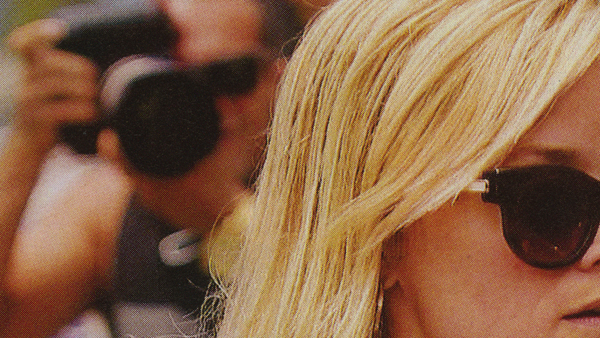 Just Like Us / Jesse McLean
Just Like Us / Jesse McLean
Kashmere: In looking at the full arc of your work up to this point, Just Like Us and I’m in Pittsburgh and It’s Raining, taken together, seem to mark another turn. They bear a lot of the characteristics of your previous videos, but they are different in a way that is hard to describe. The location of the voice is harder to place, for one thing. They are also more polished, layered, and formally complex. Is this push towards greater ambiguity and complexity a conscious one?
McLean: I hadn’t thought of it as a turn towards a greater complexity or ambiguity. In fact I thought The Invisible World was so densely layered that afterwards I wanted to step back and try to be more focused and clear. But I agree they are more polished than earlier work and more melancholic, especially Just Like Us. I'm in Pittsburgh and It's Raining was a portrait film, so I approached it differently. I began with the voice, which was a new move for me, editing picture to sound from the beginning. In Just Like Us I was experimenting with writing, with creating a character, and this narrator is hard to place, temporally and spatially. There’s a purposeful uncertainty that allows the viewer to become the narrator or not. I always want my work retain a complexity and a curious spirit, but ambiguity is not my goal, rather I’m looking to retain an openness.
Kashmere: Light is a frequent motif for you. One of your earliest films that I’m aware of, Celebration of Lights (2003), is literally a play of colored light. There are a lot of shots of the sun, sunsets, skies and stars, throughout your videos; and lights going on and off, grids losing power. Magic for Beginners uses flicker, which accompanies the line “You’ve got to look into the light” from Oneida’s Sheets of Easter. And lighting equipment, as you’ve mentioned, features prominently in I’m in Pittsburgh and It’s Raining. What is it about the element of light that is so irresistible for you, beyond the fact that it’s an irreducible property of the mediums you work in?
McLean: The artist and filmmaker Emily Wardill once said in a Q&A (I'm extrapolating) that when the screen is black it’s about the artist/the film and when the screen is white it’s about the audience. I really like that. We are attracted to light, we see it and feel it, though I’m unsure if it’s tangible (are we touching it if it is bouncing off of us?). Describing light quickly becomes a metaphor for something more metaphysical. Lights going off becomes losing yourself and your connection to the known world. Losing your way in the dark is frightening but also surprisingly more comfortable than being blasted with the white screen, with having to face yourself and be located in your body again. It’s not a perfect metaphor, another reason I probably like using it for multiples purposes and meanings. On a personal note and from my grip days, I still love all the lighting gear.
Kashmere: In addition to the space of the cinema, you’ve also created work for gallery exhibition. What is your feeling about making work specifically for galleries? You’ve done it quite a few times.
McLean: I think it works best when it's a piece designed especially for that situation. That's not always possible and sometimes my longer form single-channel works are shown in galleries. Those pieces can work, too, but audience attention is much more limited. I think it's rare in that situation to have the complete attention of a viewer, who is willing to sit and watch the entire video from start to finish. I do like having the opportunity to show my work in different ways, though, I'm thankful for that. Because sometimes I get ideas that work much better in galleries, with a transient audience, or are more sculptural or whatever.
Kashmere: You’re part of an art couple. Tell me about living with Thad.
McLean: Living with Thad is the best. I mean, two artists together can be difficult because we never seem to be in sync with regards to shows. One of us always seems to be freaking out getting ready for something while the other has just finished and is ready to veg out and sleep in/sinkhole. But maybe it’s better that way, only room for one person freaking out at a time. On a practical and creative side, it’s awesome to have a person to give feedback right there. And someone whom you respect and who respects your art practice; who understands wanting to stay in and work on art a lot. And Thad has helped in a number of ways on my projects, most obviously on the soundtracks. He's a musician and really helps with generating music and sounds for the videos. We help each other; I've got some good editing tips.
Kashmere: What’s next for you?
McLean: I’m working on a short video called See a Dog, Hear a Dog that I hope to have completed in early fall. The title is a sound design maxim that is expanded to explore trust in the relationships and communication abilities not only between cinematic sound and image but also between people and animals, people and machines, and people and people. Subjects include dogs singing, chat bots, and the ELIZA project. I also have a longer project called When It Rains, It Pours that I've been working on for awhile, but it's still developing. It's kind of a continuation of some themes found in The Invisible World, but considering more how the growing sustainable energy crisis corresponds to human ambition and unchecked curiosity. It's inspired by Red Desert (1964), too.
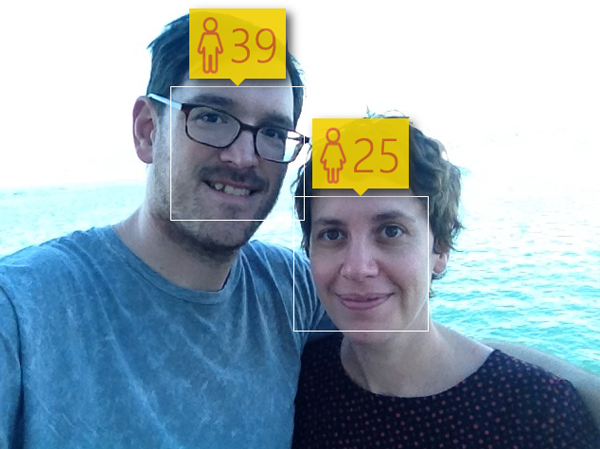 Thad Kellstadt and Jesse McLean
Thad Kellstadt and Jesse McLean
Published December 2, 2015
ABOUT THE AUTHOR
Brett Kashmere is the founding editor and publisher of INCITE. He lives and works in Pittsburgh.
